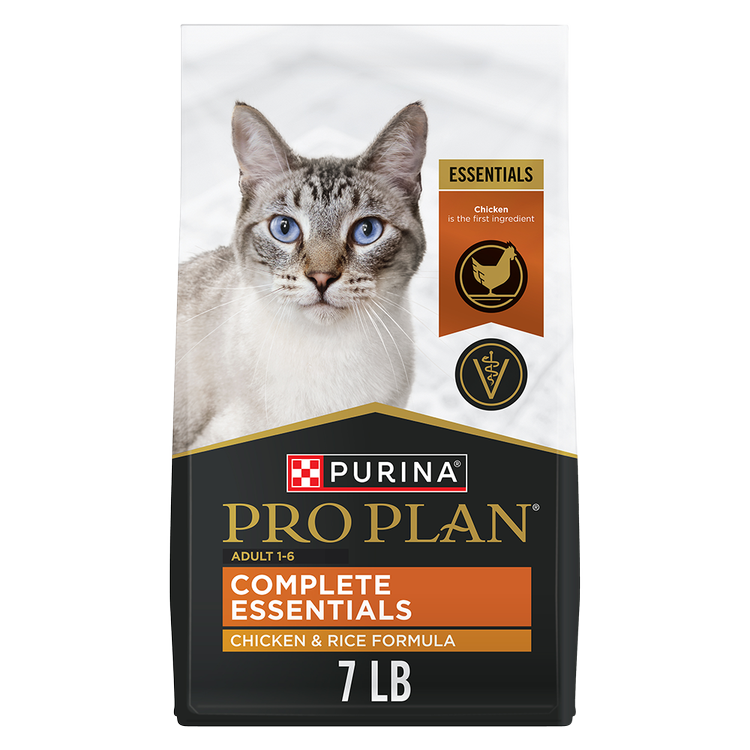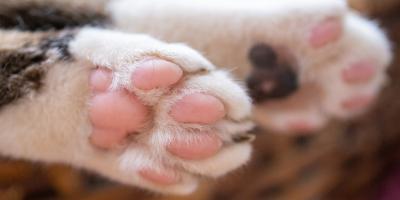Did you know cats and humans are equally prone to hay fever? However, the symptoms can be different, and your cat may be suffering from this allergy without you realizing it.
If you experience the effects of hay fever such as runny nose, sneezing and itchy eyes, you may be wondering how you can protect your feline companion from unpleasant cat hay fever symptoms.
Read on to learn more about cat hay fever, and how you can treat your feline’s allergies.
What is Hay Fever in Cats?
Hay fever in cats is an allergic reaction to pollen. Typically, pollen is ingested through the mouth and nose. It can also make contact with the eyes and throat.
While flower pollen is a common trigger, feline hay fever can also come from grass and tree pollen as well.
Allergic reactions happen when the immune system overreacts to something that it perceives as a threat. Hay fever is caused when the fine pollen particles enter the upper airways and trigger this abnormal immune response.
Chemicals such as histamine are released. In excess, these substances cause the symptoms of an allergic reaction.
Cat Hay Fever Symptoms
Often, cat hay fever symptoms manifest as itching and skin irritation.
Itchy cats tend to overgroom themselves and scratch a lot as well. This can make their skin sore. Commonly affected areas include the ears, bottom, paws and belly.
Some of the signs of cat hay fever are more commonly associated with fleas, so it’s a good idea to rule out a flea infection. Check your cat’s coat for flea droppings, and make sure they’re up to date with flea treatments. Your veterinarian can help.
Although less common, some cats may suffer with sneezing, wheezing and coughing due to hay fever. These symptoms may be particularly prevalent if your cat also has asthma.
What Causes Hay Fever in Cats?
Cat hay fever can be caused by a sensitivity to the same allergens in the air that affect humans. Allergic rhinitis is recognized in cats, causing a runny nose, sneezing and difficulty breathing.
However, allergies in cats are much more commonly linked to skin and gastrointestinal issues. Cats with allergies usually become very itchy, causing them to scratch and groom excessively.
This results in fur loss, damaged skin and secondary skin infections. Some food allergies can also cause itching, in addition to vomiting or diarrhea.
Unlike food allergies, cat hay fever is usually seasonal. Symptoms are worse when pollen counts are high.
How to Treat Cat Hay Fever
If you feel your cat is suffering from hay fever, or any other allergy, the best option is to visit the veterinarian. They can make a formal diagnosis and recommend treatment options based on the severity of your pet’s symptoms.
Treatment Options for a Cat’s Hay Fever
Before deciding on a treatment plan, your veterinarian may want to investigate your cat’s hay fever symptoms to get an accurate diagnosis.
Some of the symptoms can also indicate other underlying health problems, so these will need to be ruled out before deciding on an appropriate treatment.
Your veterinarian may prescribe a daily antihistamine treatment, steroids or allergy injections for airborne pollens to help get symptoms under control.
Another option is bathing with shampoo formulated for itchy skin . This can remove pollen from the coat, as well as reduce the need to scratch.
Check with your veterinarian before trying home remedies for your cat’s hay fever. This will ensure you don’t accidentally make the problem worse.
How to Treat Itchy Skin
Itchy skin is very irritating and uncomfortable. Anything you can do to alleviate your cat’s need to scratch will be much appreciated by your feline friend; ask your veterinarian for advice.
Preventing Cat Hay Fever
While it’s impossible to completely prevent hay fever from occurring in your cat, there are helpful steps you can take.
One of the most effective prevention tactics is keeping your cat indoors more often when there’s a high pollen count. Depending on where you live, this may happen seasonally.
You can help reduce the amount of pollen in your cat’s indoor environment by making sure to vacuum and dust regularly. Cleaning their beds, toys and any climbing frames also helps. Additionally, brushing your cat can remove pollen from their coat.
Want more cat tips? Check out our cat health articles for guidance from our experts.
Related articles

Earn myPurina Rewards with Every Purchase
Use your points for treats, toys, and gift cards with myPurina app.








